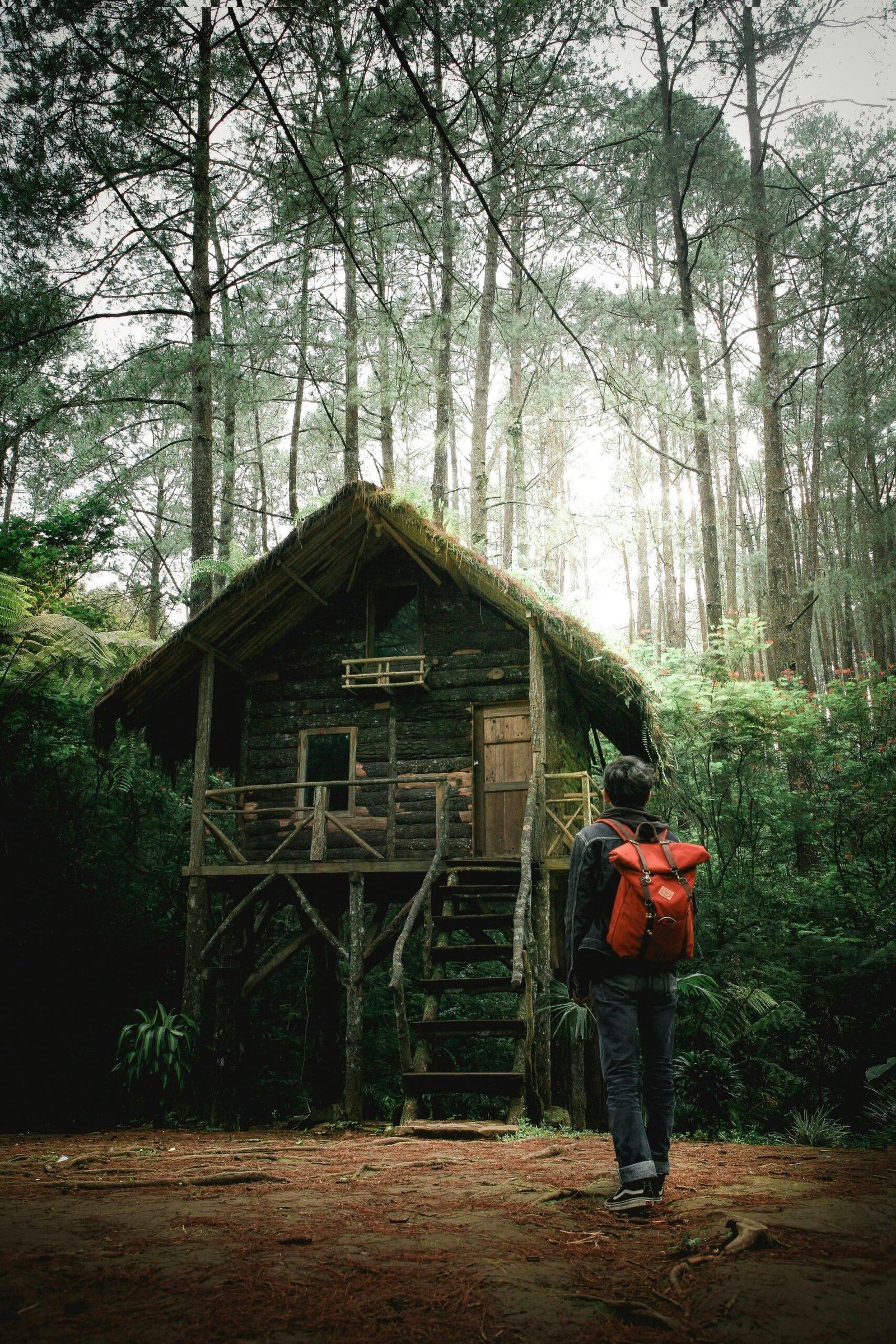Planning Your Treehouse: Essential Preparations
Embarking on the journey to build a DIY treehouse for kids begins with meticulous planning. Selecting the right tree is paramount, as the foundation of your project relies on its strength and stability. To ensure the tree is healthy and robust, look for one with a thick trunk, free of disease or damage. Measuring the tree’s diameter is crucial; a general guideline is to choose a tree with a diameter of at least 12 inches at the intended level of the treehouse platform.
Safety considerations must be at the forefront of your planning phase. Avoid trees located near power lines to eliminate the risk of electrocution. Additionally, position the treehouse at a height that balances fun and security – typically, no higher than 10 feet off the ground – to minimize injury in case of falls. Ensuring the treehouse is not too high is particularly important for younger children.
Designing a simple, kid-friendly layout is the next step. Prioritize safety and ease of use in your design, incorporating features such as sturdy railings, secure ladders, and an accessible entrance. Start by sketching a basic floor plan that outlines the structure’s dimensions and key components. This visual guide will aid in the construction process, making it easier to turn your vision into reality.
Creating a comprehensive list of materials and tools needed for the build is essential. Typical materials include pressure-treated lumber, galvanized screws, and waterproof sealant. Tools such as a saw, drill, measuring tape, and level will be indispensable. By having everything on hand before you start, you streamline the building process and reduce the likelihood of delays.
By meticulously planning and preparing, you’ll lay a solid foundation for your treehouse construction project. Through careful tree selection, safety consideration, thoughtful design, and thorough material preparation, the steps outlined ensure a successful and enjoyable DIY treehouse building experience for you and your kids.
Gathering Materials and Tools
Before starting the construction of your DIY treehouse for kids, it is crucial to gather all the necessary materials and tools. Adequate preparation ensures that your project proceeds smoothly and safely. Below is a detailed list of essential materials and tools that you need to collect.
Essential Materials:
- Lumber: Ensure you have high-quality lumber for the frame, floor, and walls of the treehouse. Pressure-treated wood is recommended for outdoor durability.
- Screws and Nails: A variety of sizes will be needed to secure the structural elements.
- Bolts: Strong bolts are necessary for anchoring the treehouse to the tree securely.
- Deck Boards: For the flooring, choose durable deck boards that can withstand weather conditions.
- Plywood: Useful for walls and roofing, offering strength and stability.
- Paint and Sealant: To protect the wood from the elements and add a touch of personalization.
Necessary Tools:
- Drill: A cordless drill with various drill bits for pre-drilling holes and driving screws.
- Saw: A circular saw or handsaw for cutting lumber to size.
- Hammer: For driving nails and securing components.
- Level: To ensure that all parts of the treehouse are level and properly aligned.
- Measuring Tape: Essential for precise measurements and cutting.
- Screwdriver Set: Various screwdrivers might be needed for specific tasks.
It is advisable to source high-quality, affordable materials from reputable hardware stores or lumber yards. Consider visiting a local home improvement store or searching online for deals and discounts. When it comes to tools, if you do not have them readily available, you might consider borrowing from friends or neighbors. Additionally, many tool rental services offer a range of equipment that can be rented for a small fee, ensuring you have access to the necessary tools without the need for a substantial investment.
Optional Materials:
- Windows and Doors: Adding windows or doors can enhance the treehouse’s design and provide better ventilation.
- Ladder: A sturdy ladder for safe and easy access to the treehouse.
- Rope and Tarps: For additional play features or weather protection.
Being well-prepared with the right materials and tools will set the foundation for a successful treehouse building project. It ensures that the structure will be safe, durable, and enjoyable for your kids to use.
Step-by-Step Construction Guide
Building a DIY treehouse for your kids is an exciting venture, bringing together creativity, craftsmanship, and an opportunity to bond. This step-by-step construction guide will assist you throughout the process, ensuring a safe, enjoyable, and structurally sound treehouse.
Begin by constructing the platform. First, choose a sturdy tree with strong branches to support the weight of the treehouse. Position the platform level across the tree, securing it firmly using large bolts or lag screws, ensuring it is stable and well-balanced. Use a spirit level to verify that the platform is even.
Next is the framing of the walls. Cut the lumber to the required lengths and assemble the wall frames on the ground. It’s essential to keep the frames square and even. Carefully lift each wall frame onto the platform, one at a time, securing them to the platform and adjacent walls using screws or nails. Ensure that the walls are plumb and secure by reinforcing the joints.
The roof is one of the most critical parts of the treehouse. Build a sturdy roof frame using rafters connected at the top to form a ridge. Secure the rafters to the walls of the treehouse, ensuring they are evenly spaced. Cover the roof frame with plywood for stability, and then add roofing felt or shingles for weatherproofing. Make sure the roofing materials are installed properly to prevent leaks.
For entrance and exit, include safe and easily accessible options such as stairs, ladders, or rope ladders. If using a ladder, ensure it is firmly anchored and can support your child’s weight. For stairs, build them with a shallow rise and tread depth appropriate for small feet. Rope ladders can add an adventurous touch but must be securely fastened to the tree and inspected regularly for wear and tear.
Safety should be your highest priority during each step of construction. Regularly check for structural integrity, ensuring all attachments are secure and there are no loose elements. Sand any rough edges to prevent splinters, and consider applying a sealant to the wood to protect it from the elements. With careful attention to detail and adherence to these instructions, you will create a treehouse that is both safe and delightful for your children.
Finishing Touches and Safety Additions
Once the main structure of your DIY treehouse is in place, the next step is to add the finishing touches that will not only protect and enhance its appearance but also make it a fun and safe space for children. Start by focusing on the treatment of the wood. Applying a quality paint or wood stain will serve as a protective barrier against weather elements such as rain, sun, and wind. Opt for colors that blend with the natural surroundings or go bold with vibrant hues that make the treehouse stand out. Remember, the primary goal is to seal the wood to extend its lifespan and maintain its aesthetic appeal.
Adding creative elements can transform the treehouse into a magical escape for kids. Consider installing a chalkboard on one wall; it’s a versatile addition that can be used for drawing, writing, or playing games. Comfortable seating, such as cushions or built-in benches, can make the space inviting for hours of play or relaxation. A pulley system can also be a fun and functional addition, allowing kids to haul up toys and snacks, making the treehouse even more engaging.
Safety is paramount in a treehouse project. Ensure the installation of sturdy railings and barriers around open edges to prevent falls. These should be strong enough to withstand leaning and active play. Non-slip surfaces on stairs and ladders are crucial to avoid slips and injuries, especially in wet conditions. Materials such as grip tape or textured paints can be effective in providing the necessary traction.
Regular maintenance is key to ensuring the treehouse remains safe and enjoyable over time. Conduct periodic checks to tighten loose screws or nails and inspect the structure for signs of wear or damage. Refresh the paint or stain annually to retain the protective layer. By keeping up with these maintenance routines, you can ensure that the treehouse remains a safe and cherished spot for your children for many years.



